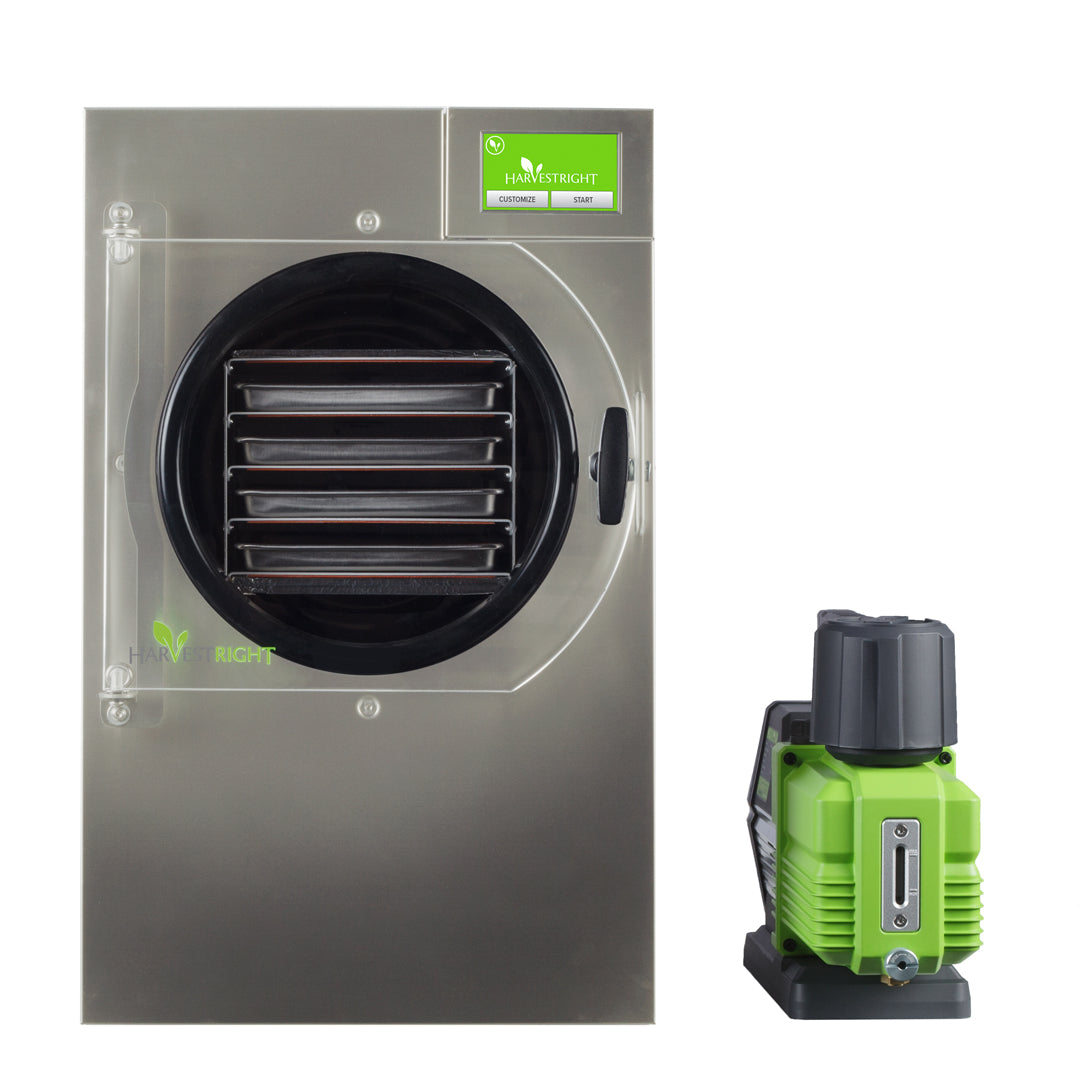Freeze drying is one of the most effective ways to preserve food for long-term storage while maintaining its flavor and nutritional value. A key component in this process is the vacuum pump, which plays a crucial role in removing moisture from food.
In this guide, we’ll cover:
✔ How vacuum pumps work in freeze drying
✔ Types of vacuum pumps
✔ Maintenance tips for long-term performance
Let’s dive in!
What Is a Freeze Dryer Vacuum Pump?
A vacuum pump is an essential part of a freeze drying system. It works by:
✅ Creating a vacuum environment – Lowers air pressure inside the freeze dryer.
✅ Removing moisture from food – Allows water to sublimate directly from ice to vapor.
✅ Enhancing efficiency – Speeds up the freeze drying process.
Without a properly functioning vacuum pump, a freeze dryer won't be able to remove moisture effectively, leading to poor results.
How Does a Vacuum Pump Work in Freeze Drying?
The freeze drying process happens in three stages:
1. Freezing Phase
-
Food is frozen to extremely low temperatures (-40°F or lower).
2. Primary Drying (Sublimation) Phase
-
The vacuum pump lowers air pressure, allowing ice to turn directly into vapor without passing through the liquid phase.
-
This is the most important role of the vacuum pump.
3. Secondary Drying Phase
-
Any remaining moisture is removed to make food completely dry and shelf-stable.
Types of Vacuum Pumps for Freeze Dryers
There are two main types of vacuum pumps used in home freeze drying:
1. Oil-Based Vacuum Pumps (Standard & Premier)
✔ Most common type for freeze dryers.
✔ Requires regular oil changes to maintain performance.
✔ Premier models use high-quality oil filtration to reduce maintenance needs.
🔹 Best for: Home users who want affordable and reliable performance.
2. Oil-Free (Dry Scroll) Vacuum Pumps
✔ No oil changes required – lower maintenance.
✔ Quieter operation and longer lifespan.
✔ More expensive upfront compared to oil-based pumps.
🔹 Best for: Users who want low-maintenance operation and are willing to pay a premium.
Vacuum Pump Maintenance Tips
Proper maintenance extends the lifespan of your vacuum pump and ensures optimal freeze drying results.
1. Change the Oil Regularly (For Oil-Based Pumps)
🔹 When to change: After every 4-5 batches or when oil looks dark/cloudy.
🔹 How to change:
-
Drain old oil.
-
Refill with clean, high-quality vacuum pump oil.
-
Run the pump briefly to circulate the oil.
💡 Tip: Using filtered oil can extend oil life and reduce changes.
2. Keep the Pump Clean
🔹 Wipe away dust and debris.
🔹 Check for oil leaks or unusual noises.
3. Check the Seals & Hoses
🔹 Inspect hoses for cracks or leaks.
🔹 Make sure all connections are tight for a proper vacuum seal.
4. Store in a Cool, Dry Place
🔹 Avoid extreme temperatures and humidity.
🔹 Cover when not in use to prevent dust buildup.
Should You Upgrade to an Oil-Free Vacuum Pump?
If you're wondering whether to switch to an oil-free pump, consider these factors:
✅ Low maintenance: No oil changes required.
✅ Less mess & hassle: No need to handle or dispose of oil.
✅ Higher cost: More expensive than standard oil pumps.
✅ Longer lifespan: Typically lasts longer than oil-based models.
💡 Verdict: If you freeze dry frequently and prefer convenience, an oil-free pump is worth the investment. Otherwise, an oil-based pump remains a cost-effective and reliable choice.
Final Thoughts
A well-maintained vacuum pump is essential for successful freeze drying. Whether you choose an oil-based or oil-free model, keeping your pump in top condition ensures:
✔ Faster and more efficient drying
✔ Better food preservation results
✔ Longer equipment lifespan


